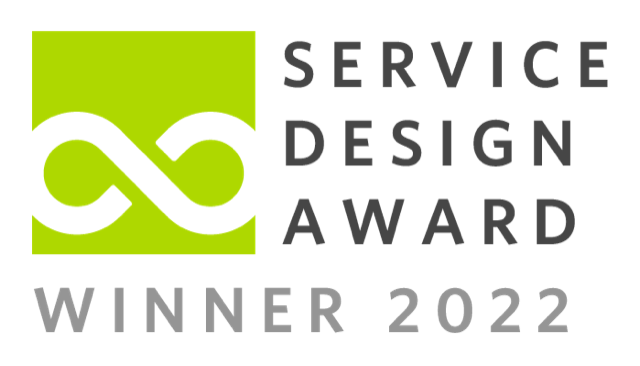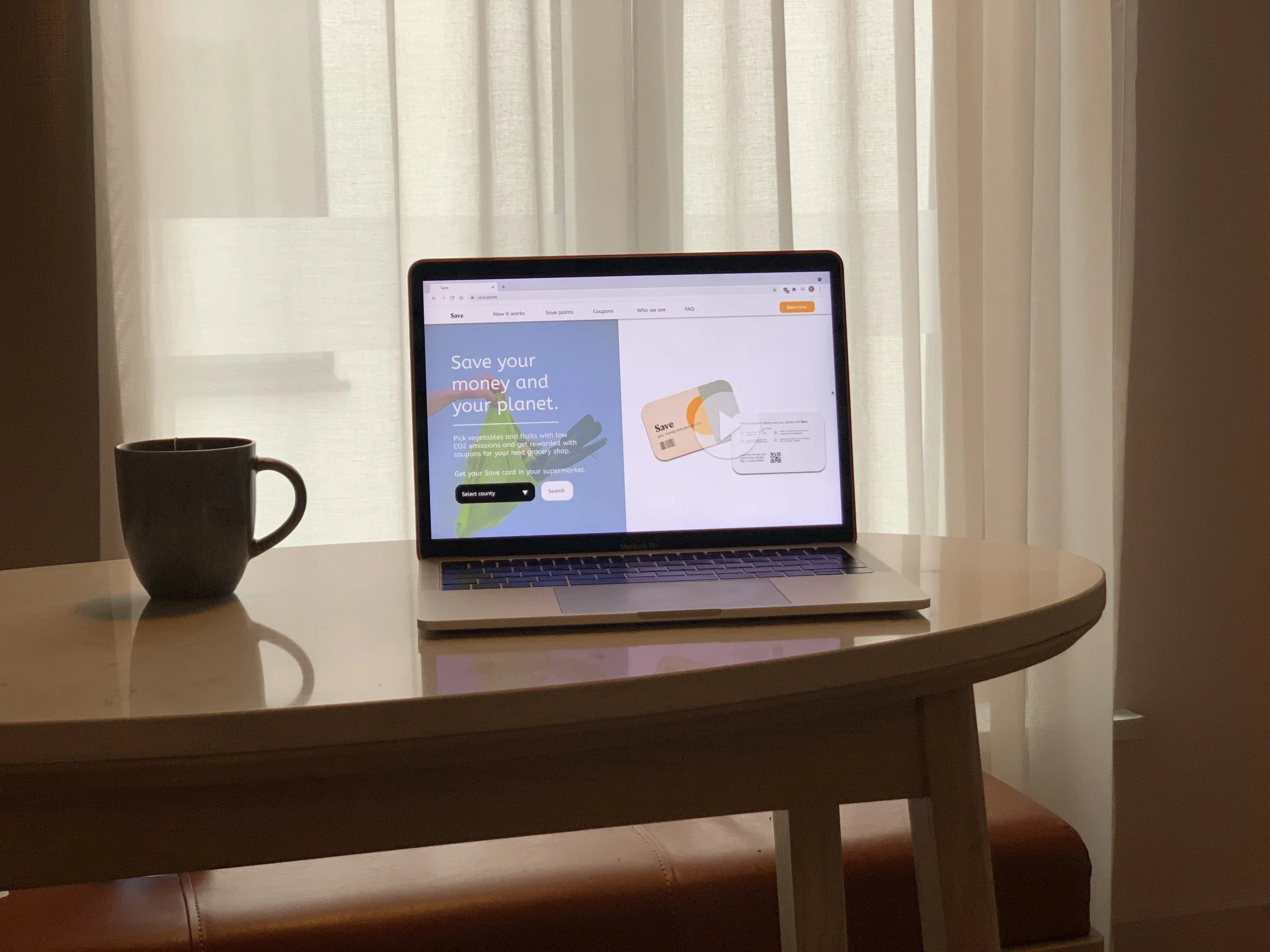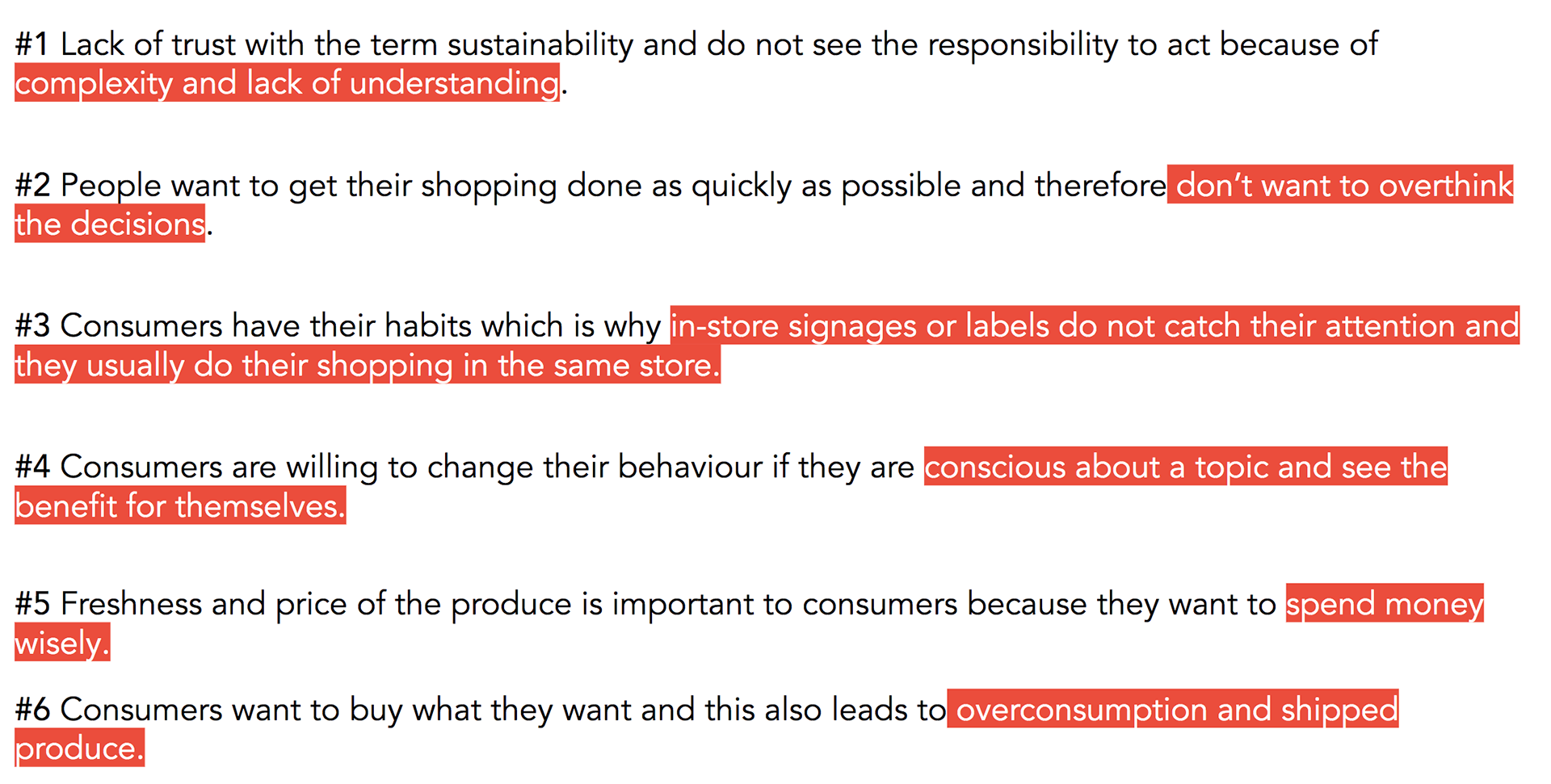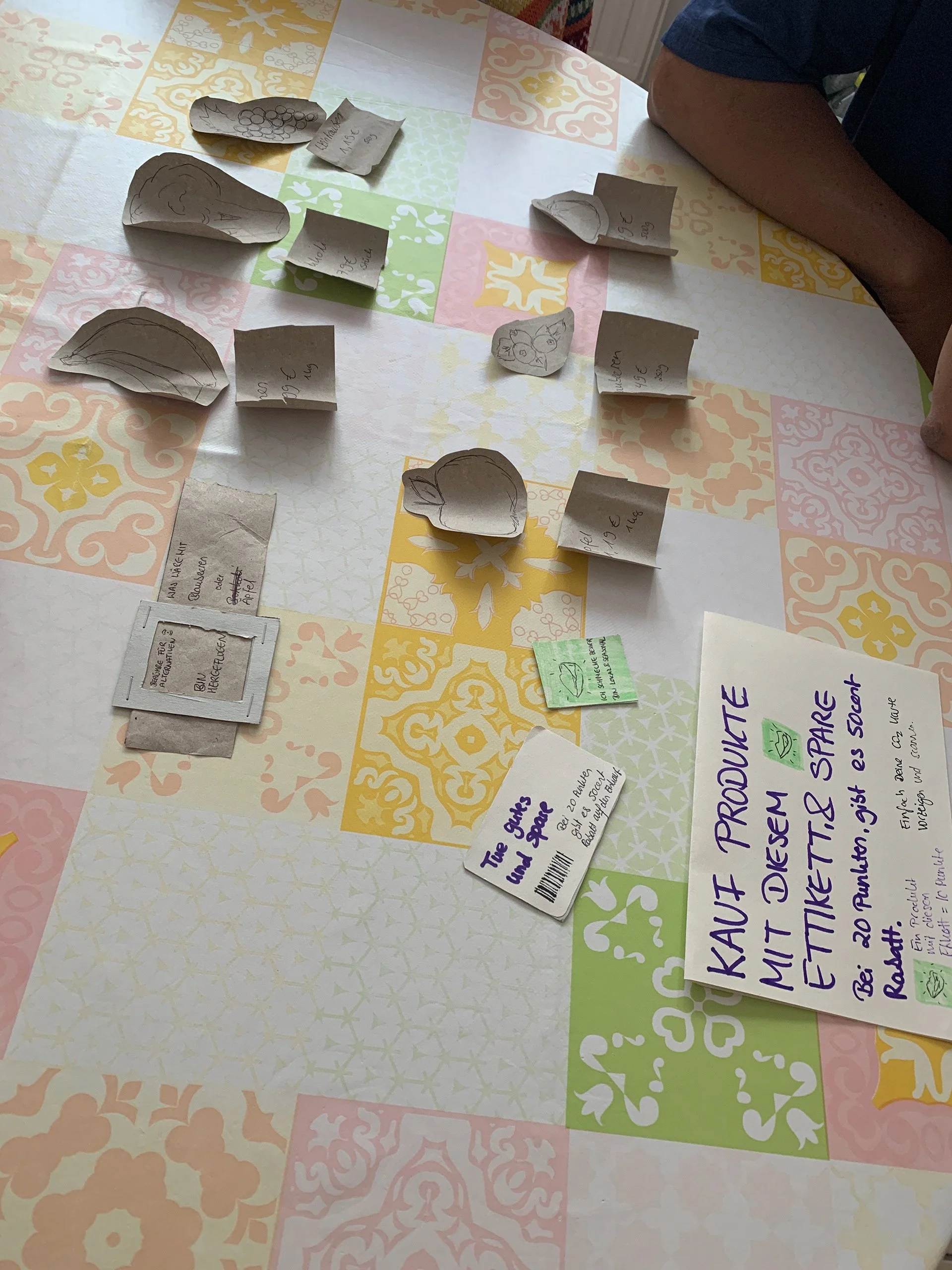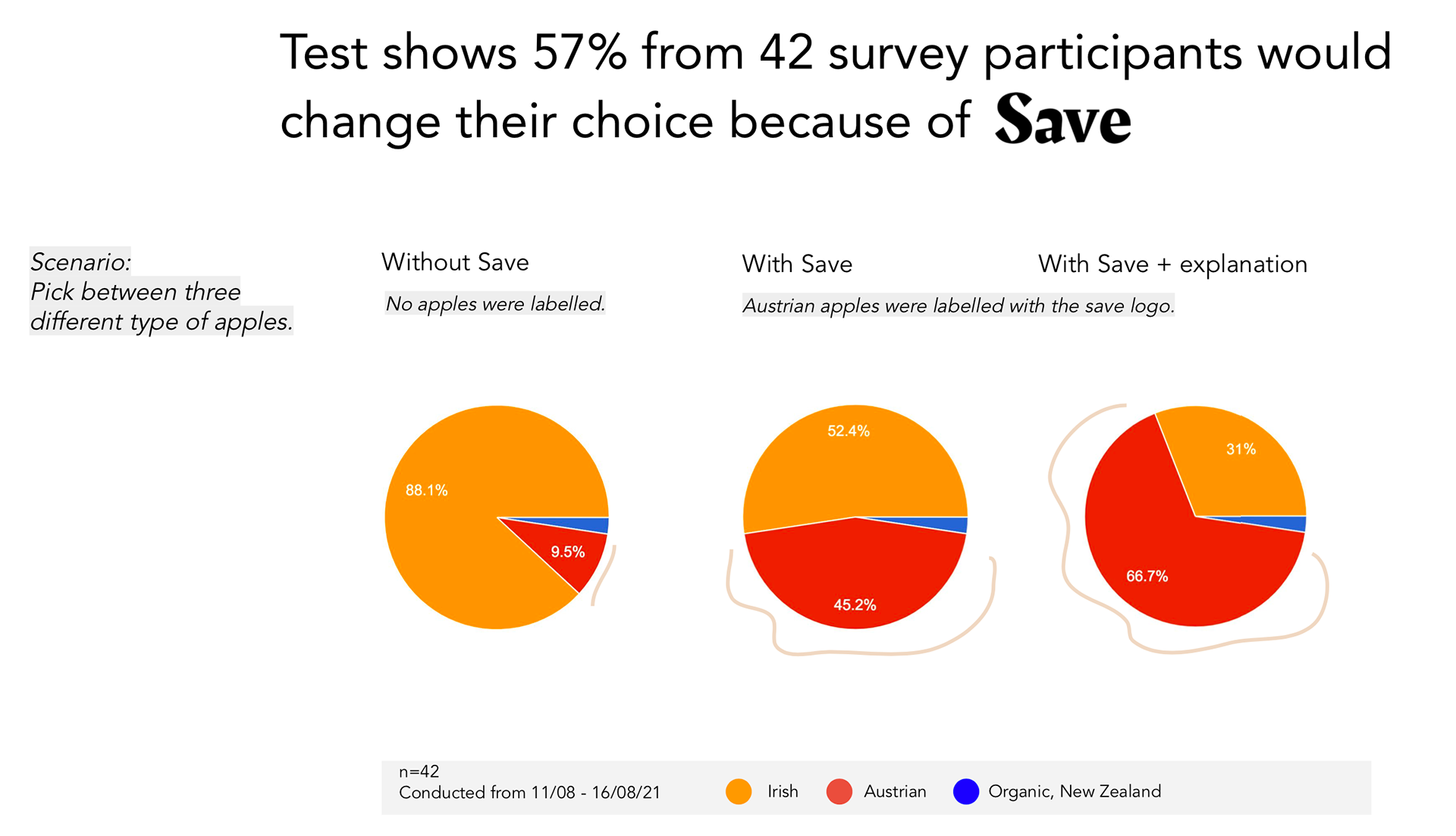Save
A way to encourage consumers to pick products with low CO2 emissions when shopping for groceries.
Major Design Project/ Master Thesis
Extent of the Project:
12 weeks (May - August 2021)
Industry:
Food
Mentor:
April Durrett (prev. Design Director @ Fjord, Ireland)
Individual Project
Category:
Service Design, UX Design, Business Design, Circularity, Systems Thinking
Way of Working:
In-person, remote
“What really impressed us in this project was the holistic view on what it means to go shopping sustainably (…) It’s very simple and good design usually is very simple. (…) I’m super proud to see the next generation of service designers coming up with amazing solutions for the really relevant problems of our world.”
– Birgit Mager, Co-Founder and President of the International Service Design Network (SDN)
Problem area
⅓ of carbon emissions are caused by the food industry. Further to that, depending on our food choice, at least 2x more amount of carbon emissions are being produced. This is why we need to act now, starting from the way we think about groceries and what we purchase.
With this major project, I wanted to take the opportunity to use service design to work on a human-centered and holistic approach to tackle this issue, but also to consider business objectives and the Sustainable Development Goals (SDG).
Focus area
Due to time constraints, this project had its focus on consumers and fresh products, i.e. vegetables and fruits.
Research has been conducted in Germany and in Ireland.
Save
Save is a service that helps and encourages consumers to pick products with low CO2 emissions when shopping for groceries in-store. It enables consumers to identify CO2-friendly products easily and gives them an incentive for their actions. Further to that, "Save" provides transparency over the CO2 emissions that have been caused by the "CO2-friendly" product they have purchased and gives consumers the chance to learn more about the food industry by participating in a quiz. It aligns the needs and interests of consumers, supermarkets, and the government, making sure the service provides a seamless experience for different parties. Inclusive design, business design, and systems thinking support the value of this service.
Principles
Accessible to people from different backgrounds
Easy and simple to understand
Quick way to pick up information
Save label
Fresh products are labelled with the Save logo if they meet certain criteria. The criteria are set by supermarkets, sustainability experts, data providers and the government. In addition, the label helps consumers to identify CO2-friendly products easily.
Save card
The Save card allows consumers to collect points whenever they have purchased a product with the Save label. Collected points and further information on the purchased products can be seen in the Save app. A digital Save card can be added to the consumer's Google Pay or Apple Wallet too.
Save app
The app provides following features:
Status updates of collected Save points
Transparency over the CO2 emissions of purchased products with the Save logo
Access to discount coupons
Quiz which allows consumers to unlock coupons and educates them e.g. about food labels, food CO2 emissions at the same time
Information in the three most spoken languages
Save website
The website provides information about Save, where to find it, how it works, who the people behind Save are, and how to become part of it too.
Backstage process
Service blueprint
1. Setting up a clear brief, identifying potential stakeholders and setting up a project timeline.
Discover
2. Interviewing relevant stakeholders, observing consumers, conducting service safaris to get an overview of the situation and obstacles.
3. Identifying hypotheses based on research results and conducting a survey to prove/ to disprove hypotheses.
4. Identifying problem areas and evaluating scope by using methods such as the IDEO framework and SWOT analysis.
5. Further research on problem area and re-interviewing previous interviewees and external experts.
Explore & Define
6. Using gathered information and put them into context by using methods such as user journey, ecosystem map, mindsets.
7. Defining principles to ensure crucial features are included in the solution.
Develop & Test
8. Co-creation sessions to come up with ideas.
9. Prototyping in different stages and testing each prototype with different stakeholders/ users.
10. Getting feedback and re-iterating concept idea.
11. A/B test to prove/ disprove the potential of Save.
Deliver
12. Finalising the concept.
13. Scripting, filming and editing a video to explain Save.
14. Developing implementation plan, service blueprint, prototypes, ways of measuring success, value propositions for different stakeholders.
Approach summary
Research has shown that there is a lack of understanding of sustainability, and time and money are key factors for consumers when it comes to making decisions.
Summary of key findings and insights
Four consumer mindsets have been identified that have been referred back to throughout the whole design process, helping to create ideas that meet consumer desires and needs, and that consider their way of thinking.
Expert interview with Friedrich Rantzau, Agricultural Scientist.
One of the co-creation sessions to come up with concept ideas.
Paper prototypes and early user testing identified failures and helped Save to become a strong service with a high chance of being accepted by the consumers.
User tests proved that the“loyalty”-card and the point-collection system encourage the consumer to pick a certain product.
Getting feedback from a grocery chain has underlined the importance of a seamless and almost invisible experience with Save.
An A/B/C test has been conducted in the final stage of the project in order to prove/ disprove the potential of Save. The following shows a summary of the results:
Implementation plan
KPIs to measure success of Save
Amount of used coupons
Amount of people taking part in the quiz
Amount of app downloads
Amount of card registrations
Sales: Baseline/ Amount of products with save label
